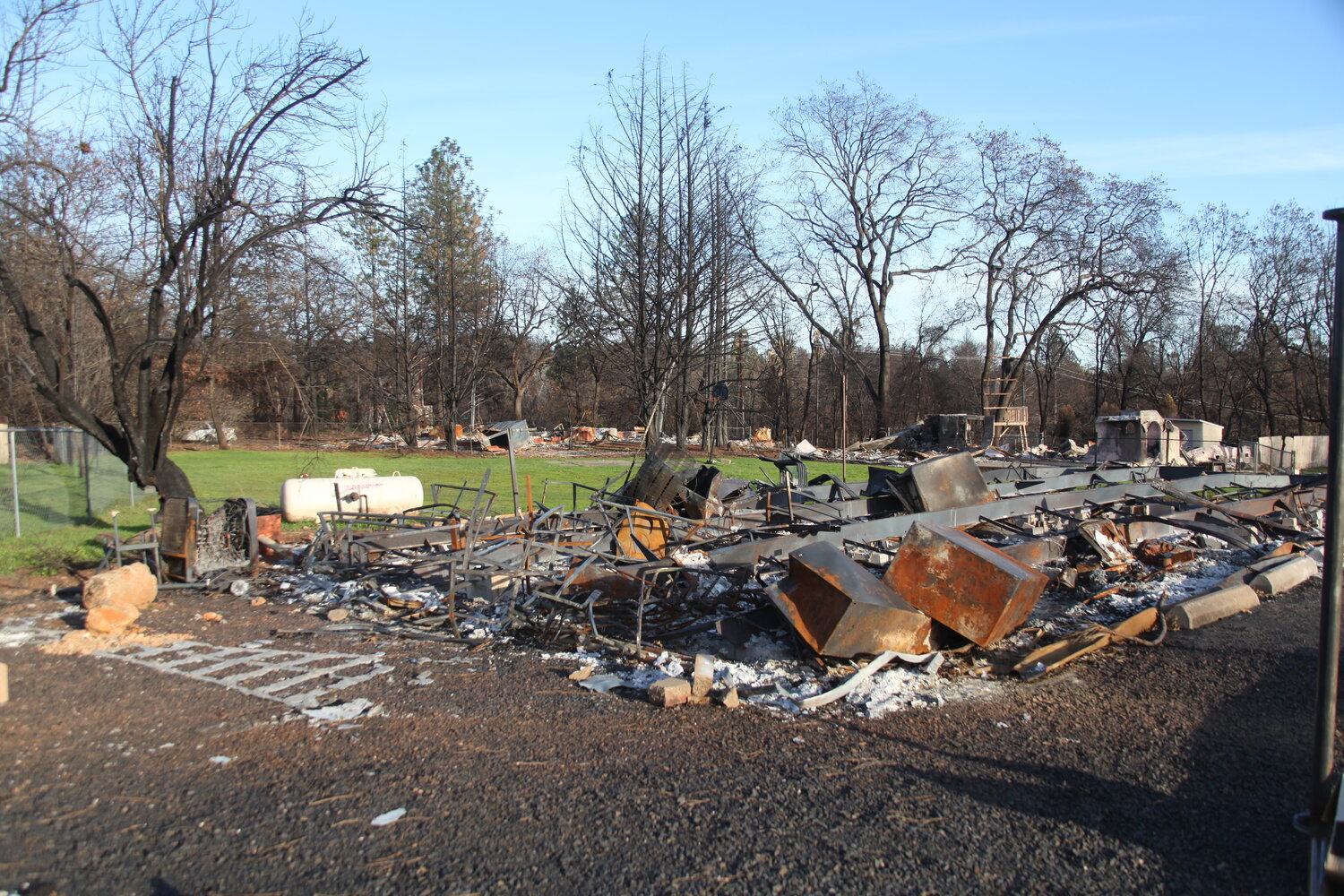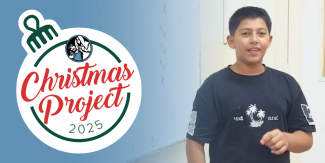It’s hard to imagine the trees that used to surround Paradise, California, giving weight to the city’s name. Patches of growth still exist, but much of the remaining forest stands as dark, burned pillars, marked with spray paint so they can be removed. Behind the Paradise Church of the Nazarene, several properties are visible: monochromatic patches of debris, colored the rusty brown color the Camp Fire left behind.

Peggy Noonan only lived in Paradise for about a year when the Camp Fire destroyed her home. She came to the church to see if she could find a pair of tennis shoes; she’d left home with only the shoes she was wearing, and they were beginning to wear out. She seems almost surprised that she was there at all; she often finds herself thinking that she can grab another pair of shoes, or a photo, or a piece of clothing, when she gets home.
But home is a fluid concept for residents of Paradise right now. Some have moved on. Without jobs, schools, and homes, Paradise became an impossible place to return to. Many moved into the neighboring cities; it’s estimated that 20,000 people moved into Chico, increasing the population by nearly 25 percent and worsening an ongoing housing crisis. Some, like Noonan, have bought a home on wheels, something they can take with them anywhere. In cities bowed under the weight of a new population, jobs are few and far between.
A year after the town was destroyed, “recovery” is still a word that seems far away. The truth is that disasters cause crises that can last for years. The longer it takes to get aid, come home, or feel normal again, the more hope gets chipped away.
“I’m fearful, I think we’re going to see more casualties from this thing,” Noonan confides. “A lot of people are losing hope.”
CHURCH PARTNERSHIPS
Immediately after a disaster, the event can dominate the news cycle. And it should—the need for immediate aid and information is vital. Recovery, though, takes much longer than a few weeks. The damage to culture and social cohesion is often invisible. The question becomes, then, how can churches fill the places that need filling?
Churches are uniquely positioned to care for their communities. They understand the social context because they were a part of the community long before the emergency, and they can continue to provide aid long after the immediate needs have passed. In the strange liminal space post-disaster, the Paradise Church of the Nazarene has opened its doors. The church has also been supported by The Hope Center, a faith-based nonprofit ministering to those who are homeless and vulnerable in Oroville, a city about 20 miles away from Paradise.
It’s hard to miss the sanctuary driving into town; it sits just off the main road and sports a banner reading, “RE-ENTRY HELP HERE” in bold, red letters. Although 28 of the 40 families at the church lost everything and the youth building on the grounds burned down, the sanctuary still stands. Since most of the families have left, though, the church isn’t using the space to meet. The church building is the perfect place to house essentials like clothes, shoes, pantry staples, and clean-up kits, and the Hope Center has provided counseling and drop-in services there.

Churches and other organizations are partnering all over Paradise. Volunteers who are coming to help are staying at the Paradise Evangelical Free Church and can help with distribution, organizing the large number of supplies in stock, and more. And Pastor Ron Zimmer from the East Avenue Church of the Nazarene in Chico is helping coordinate teams to clear properties to be signed off by the Environmental Protection Agency. Other Nazarene churches in the area also jumped to action, acting as shelters or providing support.
Taken from the latest issue of NCM Magazine. Read the rest of the article here.






Add new comment